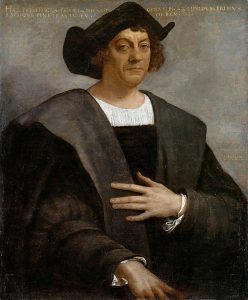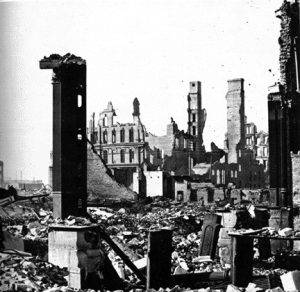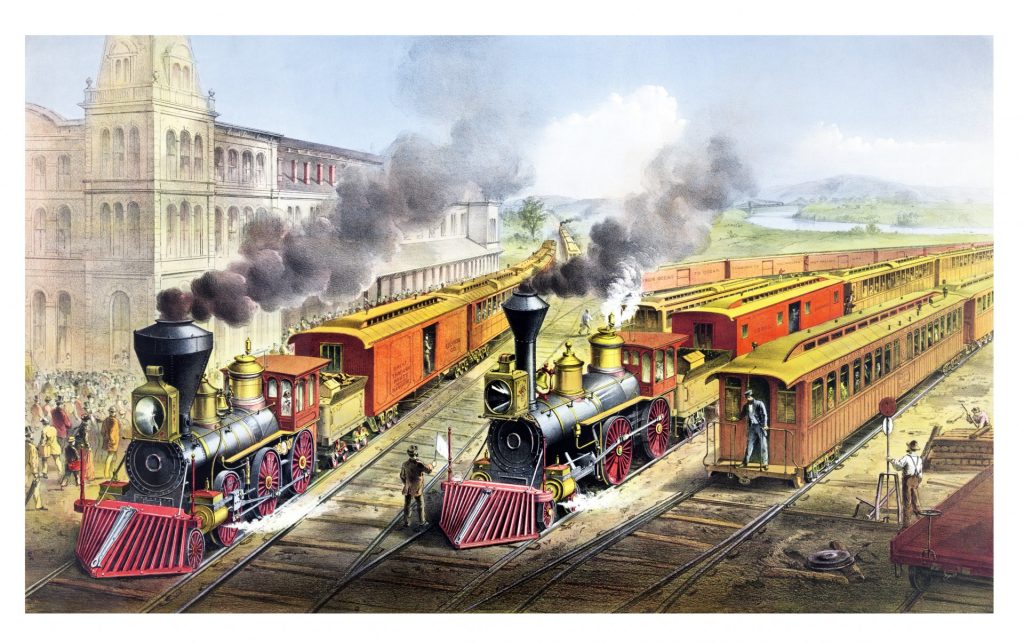 Today is Columbus Day in the United States. Celebrating Columbus began in 1792 in New York City and became an annual tradition. As a result of 11 Italian immigrants being murdered by a mob in New Orleans in 1892, President Benjamin Harrison declared Columbus Day as a one-time national celebration. This was also part of a wider effort to ease tensions and to placate Italian Americans and Italy, which had expressed official dismay at the murders. Italian Americans began using Columbus Day to not only celebrate Columbus but their heritage as well. Serious lobbying was undertaken to enshrine the holiday in states and ultimately the federal government. Colorado proclaimed it a holiday in 1905 and made it an official holiday in 1907. In 1934 after lobbying from the Knights of Columbus and New York City Italian leader Generoso Pope, Congress passed a statute requiring the president to proclaim October 12 as Columbus Day each year and asked Americans to observe it with “appropriated ceremonies” in schools, churches, and other places. However, it was a not yet a federal holiday.
Today is Columbus Day in the United States. Celebrating Columbus began in 1792 in New York City and became an annual tradition. As a result of 11 Italian immigrants being murdered by a mob in New Orleans in 1892, President Benjamin Harrison declared Columbus Day as a one-time national celebration. This was also part of a wider effort to ease tensions and to placate Italian Americans and Italy, which had expressed official dismay at the murders. Italian Americans began using Columbus Day to not only celebrate Columbus but their heritage as well. Serious lobbying was undertaken to enshrine the holiday in states and ultimately the federal government. Colorado proclaimed it a holiday in 1905 and made it an official holiday in 1907. In 1934 after lobbying from the Knights of Columbus and New York City Italian leader Generoso Pope, Congress passed a statute requiring the president to proclaim October 12 as Columbus Day each year and asked Americans to observe it with “appropriated ceremonies” in schools, churches, and other places. However, it was a not yet a federal holiday.
The effort to make it a federal holiday began in 1966 when the National Columbus Day Committee lobbied to make it a federal holiday. This was achieved in 1968 and has been a federal holiday since then. Like most federal holidays, it is often celebrated on a Monday of the week the date it falls on. The exception being if falls on a Saturday, it would be celebrated on Friday. Columbus is recognized for his discovery of the New World. He, like many, were eager to discover the riches of Cathay, India, and Japan. Since the Ottoman Empire closed off using Egypt and the Red Sea to Europeans (land routes were closed as well), European explorers were eager to find a sea route. Columbus (and he was not the only one) held the belief that by sailing west they would be able to get to the Indies. While many educated Europeans (like Columbus) believed the Earth was round, they had no concept of how it big it really was.
Thus, they thought East Asia was closer than it was. After securing financing from the Spanish monarchy, Columbus set sail on 3 August 1492 with three ships-Santa Maria, the Pinta and the Nina–from Palos, Spain. On 12 October 1492 land was sighted. They would find Cuba later and Columbus thought it was Japan. They landed on Hispaniola in December and left a small colony behind. Returning to Spain in 1493, he was received with high honors by the Spanish court. Columbus would lead four expeditions to the New World exploring the Caribbean, the Gulf of Mexico, and South and Central American mainland. His original goal of finding a western ocean route to Asia was never accomplished. And he likely never truly understood the full scope of what he had accomplished.
The New World–North America, the Caribbean, Central and South America–would open new opportunities for exploration and wealth. Spain would become one of the wealthiest and powerful nations on Earth as a result. Sea travel of great distances in the 15th century was quite a challenge, fraught with all kinds of uncertainty and dangers. They had to depend on the wind, current and favorable weather, and the stars. The sextant had not been invented yet, so they used a procedure called Dead Reckoning. This required the use of simple arithmetic and process to determine their location. A long rope was used, a piece of wood, an hourglass, and a compass. The navigator would record in a log book the daily speed and direction. The rope was knotted every four to six feet along its length.
Arithmetic tells us that distance traveled in a single direction can be measured by multiplying the speed with the time. You might have done some of this in grade school. A car traveling at 30 miles per hour for two hours would travel 60 miles (speed x 2). A navigator would log the speed, direction, and time in the log. In this way they could measure the distance traveled to and from where they departed from. Changes in wind speed and other things would be recorded as well. Columbus used his own version, gained from experience sailing, of determining the speed and direction to enter in his log. He could feel the keel moving through the water and with his sense of the wind, knew what the speed of his ship was. It was a remarkable and historic undertaking. Long sea voyages were often avoided because you were away for years at a time and dependent a great deal on nature to survive.
And there was the terrible specter of scurvy. Many would die on long sea voyages from this scourge, which came from the lack of vitamin c in the diet. Fresh water in kegs often wet bad after a month, so beer and spirits (often rum), was where you got water from. Fruits and vegetables would only last so long, and meat had to be cured for long term use. So food was rationed carefully. Later when it was realized that having citrus would alleviate this condition, sailors would get lime or lemon juice as part of their daily food ration. It became so common on British Royal Navy ships the sailors were called Limeys. Italians and Spanish are rightly proud of his accomplishment. Others had touched upon America (the Vikings for one) prior to Columbus but none had opened the door as he did to a new part of the world that had been undiscovered.
Like all our accomplished heroes of the past, he had his faults. In fact, not one hero you can point to doesn’t have faults. The ancient Greeks knew this and what defined a hero was someone who rose above them to do something extraordinary. The Greek hero Heracles (Hercules in Latin) had all kinds of faults but did things that rose above them. Columbus should be remembered for the courage, bravery, and fortitude to sail over the horizon to see what lay beyond. It would change the world and end the Venetian and Ottoman control of trade to the East forever. Columbus died on 20 May 1506. Gout was considered the cause of his death, but doctors today believe it was reactive arthritis.
For information about Christopher Columbus, here are some sources online to view:





















